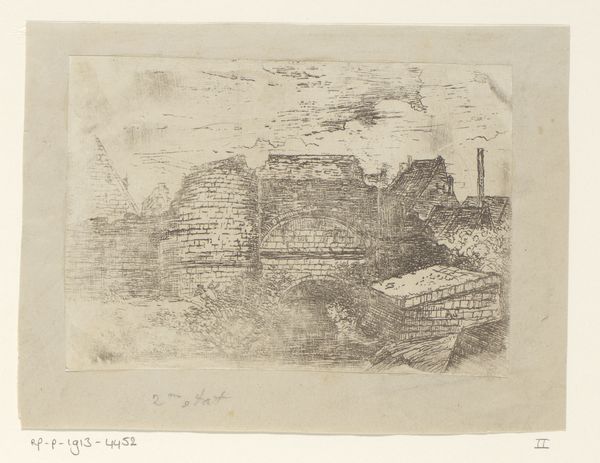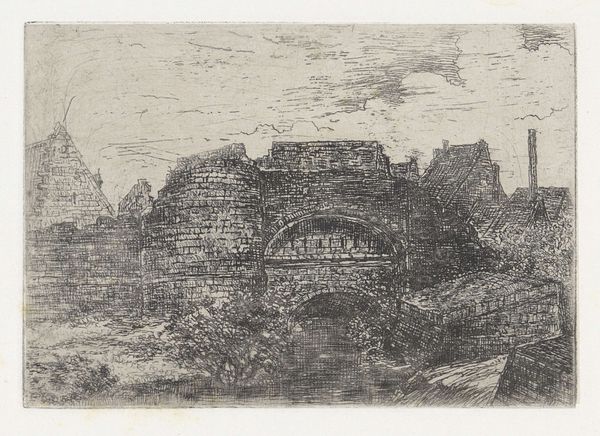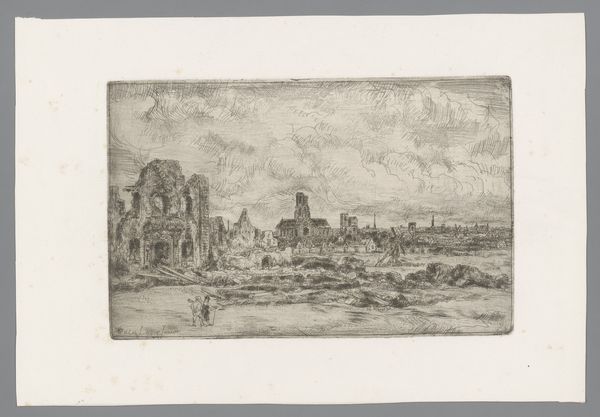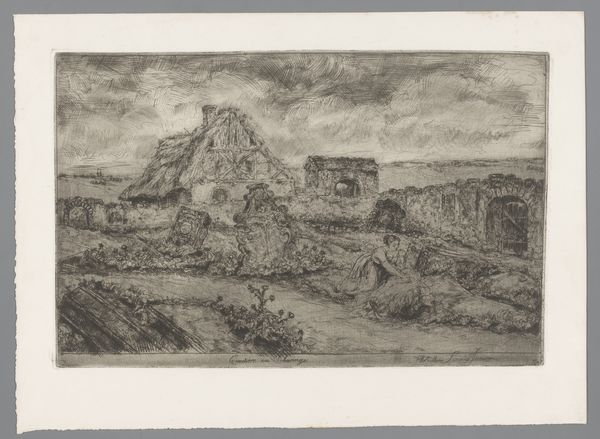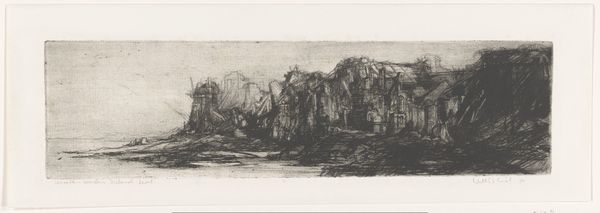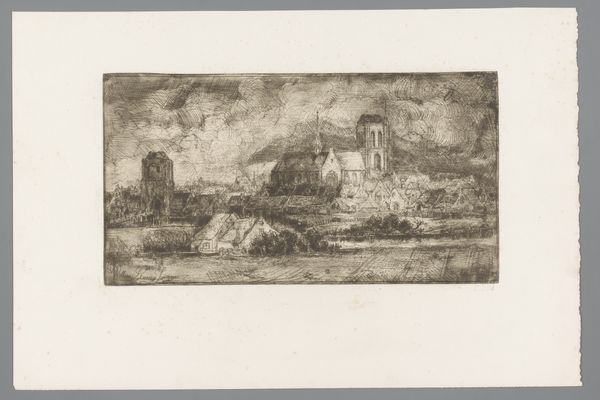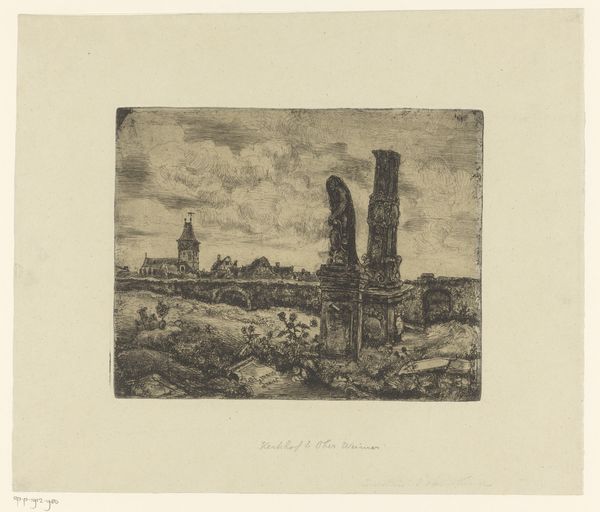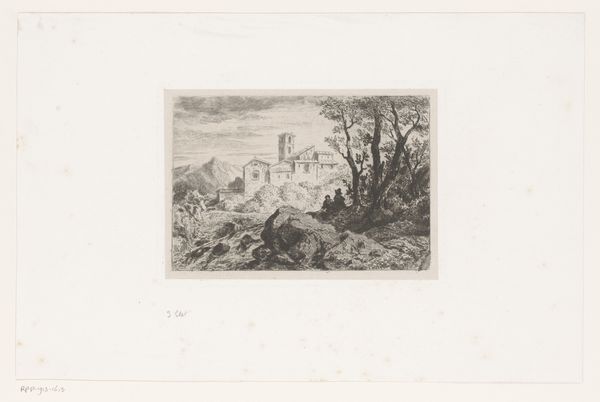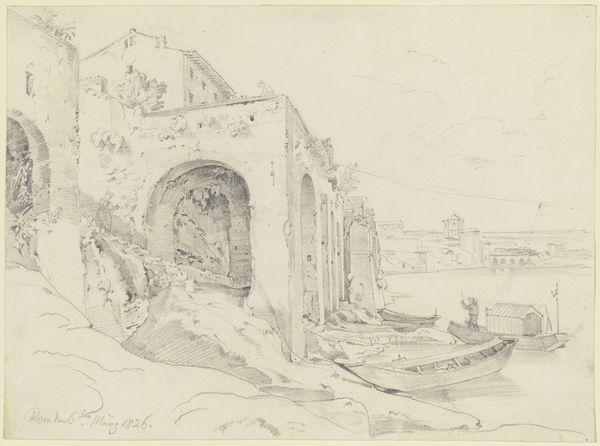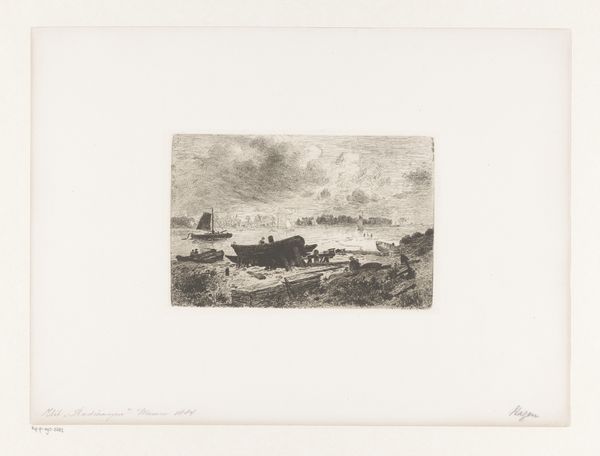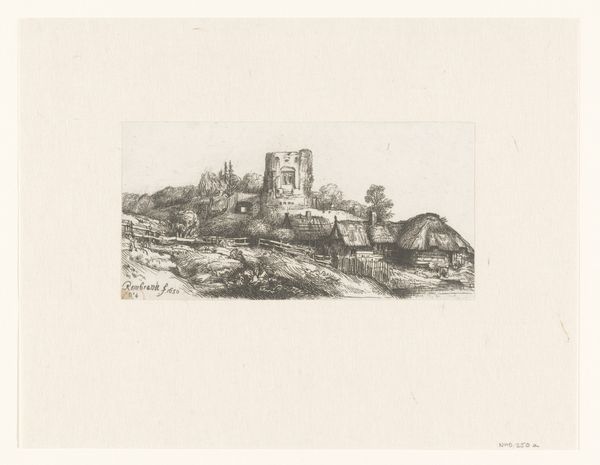
Dimensions: height 155 mm, width 191 mm
Copyright: Rijks Museum: Open Domain
Editor: Here we have "Ruïnes van wallen" by Alexander Schaepkens, an etching from between 1830 and 1899, held at the Rijksmuseum. The scene depicts crumbling walls, and I find it quite somber. What strikes you about this work? Curator: The ruins speak volumes about power structures and the passage of time. Who built these walls? Who defended them? And who ultimately brought them to ruin? We must think critically about the historical context and who benefits from the narratives of decay and abandonment so often presented. Editor: So you see it as more than just a landscape? Curator: Exactly. Think about how the Romantic movement often idealizes ruins, glossing over the often violent histories they represent. This image is more than aesthetic; it embodies political and social implications. Consider how class and race might intersect with the spaces being represented here. Who gets to mourn this loss? Who perhaps contributed to it? Editor: That's something I hadn't considered. The decay is definitely highlighted, but thinking about who benefits is key. Curator: Consider also how the artist chooses to represent this subject matter. The use of etching itself—a process involving corrosive acid—becomes metaphorically resonant. What commentary could they be trying to make on societal decline or the power structures of the time through this medium? What do the buildings represent to you? Editor: I see now, the focus on decay could be a comment on the fall of some empire, but viewed from multiple sides of society. I will have to think more about how we frame such images. Curator: Precisely! Art invites us to interrogate, not just admire. We’ve unearthed how even a seemingly simple etching carries complex socio-political baggage.
Comments
No comments
Be the first to comment and join the conversation on the ultimate creative platform.

